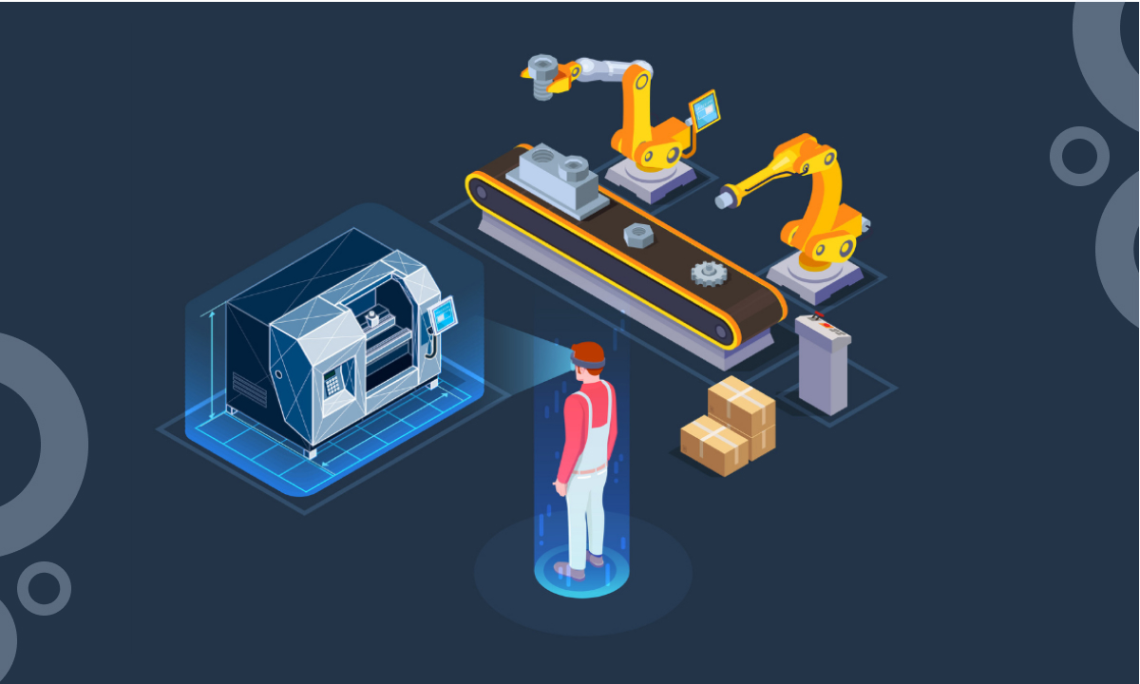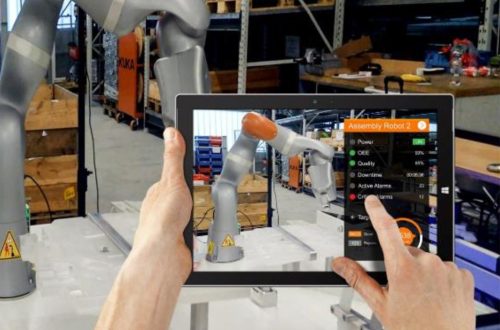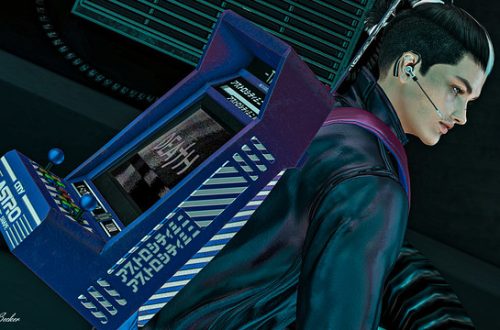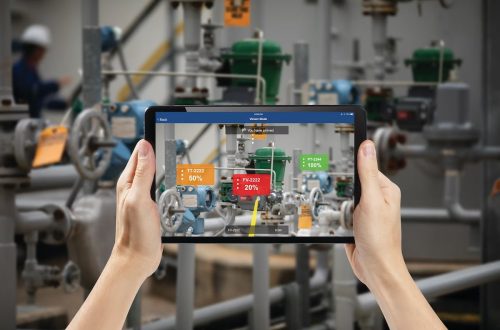
Augmented Reality in Manufacturing

Augmented Reality in Manufacturing
Manufacturing companies are facing increasing pressure to deliver products faster and cheaper. Using augmented reality can help them do just that.
A good AR solution must provide a range of benefits to increase productivity, reduce costs and create a safer working environment. The technology can be used for asset identification, streamlined work instructions, real-time inspections and more.
Asset Identification
Augmented reality is an immersive technology that superimposes computer-generated images or information on a real-world view of the world. It isn’t just a toy or a novelty; it is a new way of working, learning, and engaging with the world around us.
In manufacturing, augmented reality is being used for a wide variety of tasks. One of the most important applications is asset identification, in which plant personnel use AR to see a product’s critical features in real time, thereby increasing their understanding and reducing errors. This application helps prevent failures by showing a technician where and how to identify a potential problem with a product, then helping them correct it before it happens.
To develop these kinds of AR experiences, companies must have a rich set of digital representations of their products and services. These can be created by adapting CAD models from product development or by using digitization techniques, such as 3-D scanning. They may also need to tap data streams from enterprise business systems, sensor networks, and other SCPs.
Another key feature of AR applications is the ability to recognize the physical environment. This capability allows them to detect if a user is inside an office, on a field trip, or in an operating room and connect them with the right resources.
The most powerful and useful AR experiences are “registered” augmented reality experiences, in which a visual interface uses markers to anchor information on specific objects or surfaces. Markers can be as simple as a bar code or as complex as an image of a part, for example.
Alternatively, a more sophisticated approach uses shape-recognition technologies to identify objects based on their contours. This enables maintenance technicians to instantly recognize and interact with any type of equipment they are responsible for maintaining.
As these technologies advance, companies will need to have dedicated teams to implement them. They will need to build AR skills in-house or outsource them to best-of-breed companies with turnkey solutions. They will need to create a portfolio of AR capabilities that will help them meet the needs of their customers, employees, and partners across all industries.
Streamlined Work Instructions
Augmented reality is a tool that can help manufacturers create streamlined work instructions for a variety of processes. These instructions are designed to empower frontline workers, reduce operational costs, improve quality, and provide competitive differentiation.
These instructions can be created with augmented reality software, which is designed to give users a step-by-step guide that includes visual and audio guidance. This is a much more effective way to teach workers about processes, especially when compared to traditional paper guides.
Work instructions should be streamlined and easy to follow, so they can be used by any employee. They should include all the information that is required to perform a task, including equipment and tools. They should also have a clear list of the steps that are needed to complete the project, along with any safety precautions that must be taken during the process.
If your company uses multiple languages, make sure that your digital work instructions are accessible in each of them. This will save your team time and prevent them from having to translate the instructions into a different language.
Before implementing digital work instructions, it is important to do an analysis of the current processes and workflows that are used in your manufacturing facility. This will help you identify any issues that may arise with the new system and allow you to fix them.
In addition, you will want to make sure that employees are given adequate training for the program so they can learn how to use it and augmented reality in manufacturing navigate it properly. It is also important to make sure that there is a dedicated person who will be available to answer questions or provide assistance for anyone who may need it.
There are many benefits to using augmented reality in manufacturing, and companies that embrace these technologies will be able to keep up with the fast-paced industry. These technologies can improve productivity, streamline processes, and provide expert support with data management. By adopting these technologies, businesses can be sure to stay ahead of the competition and increase their profits in the future.
Real-Time Inspections
Real-time inspections can save time and money by detecting defects before they become major problems. These augmented reality in manufacturing technologies help inspectors to find flaws in the manufacturing process, ensuring that products meet quality standards and customer expectations.
Companies like Airbus have implemented AR technology to improve inspection processes and reduce operating costs. It helps employees to overlay a digital mockup over an image of the real system they need to inspect, so they can identify any faulty parts for replacement or modification.
This is especially useful for inspections of large-scale structures, such as bridges, where workers can use a headset to examine high-resolution photos mapped to 3D models. This allows workers to zoom in and out, rotate, and move around the structure.
In addition to speeding up inspections, AR also helps employees to access work instructions and related data points without leaving their work area. For example, a manufacturer using AR can use its system to give workers detailed engine assembly instructions for each step of the process.
Workers can also access information from other departments to provide them with guidance on completing specific tasks. This helps them to stay focused on their work and solve any problems that may arise.
Whether an employee is performing a quality check or a maintenance task, mobile AR solutions can simplify the process by allowing them to access work instructions and related data points from their smartphone or tablet. This enables them to complete their tasks without distraction, ensuring that they are able to focus on their jobs and keep their hands free for other duties.
As a result, these systems can make the entire process more efficient. They allow workers to follow streamlined work instructions that have been optimized for each type of equipment or machine, which drives increased accuracy.
They can also help newer workers gain confidence in the process and less experienced workers get a better grasp of it. They can even help quality managers to better understand how to find different types of defects.
These systems are available for both fixed and mobile devices, which means they can be used across the supply chain. They are easy to deploy and can help companies increase operational efficiency, reducing costs while improving quality and safety.
Digital Twin
The digital twin is a computer model that represents the real-world counterpart to a product or a process in the manufacturing industry. It enables manufacturers to monitor and control the performance of a product or manufacturing process before the production begins, helping them avoid costly failures in their physical products.
These models can be used in a variety of ways to improve manufacturing processes, including optimizing the operation of equipment tools and machines, improving the quality of manufactured goods, reducing labor costs, and ensuring optimal workflows throughout a manufacturing facility. They can also be used to gather and analyze data from a product’s lifecycle, delivering insights into its performance and distribution.
A digital twin can be a simple or complex model of a physical object, which can be augmented with real-time data from IoT devices and sensors. In addition, it can be integrated into a company’s existing manufacturing processes and software to help them run more efficiently.
This technology can be applied to a wide range of industries and uses, from aerospace and power generation to healthcare. A number of companies use it to create a virtual replica of their factory floor, which can help them troubleshoot production issues before they occur on the actual site.
For example, BMW Group is using digital twins to optimize the distribution of materials on its assembly lines. It can create a digital model of its factories, which can then be updated as needed to account for new product designs and production schedules. This allows it to more effectively maintain the flow of materials as the factory changes and expands, which helps the company stay competitive in its industry.
Another benefit of using digital twins is that they reduce the need for physical prototypes. This saves money on development and allows manufacturers to reduce the negative environmental impact of unused prototypes.
One important aspect of developing a digital twin for your manufacturing operations is to be sure you have the proper version control system in place. This is especially important for projects that involve a large volume of files and multiple iterations. It’s also important to have a system that can handle the complexity of developing digital twins, which often involves a team working across different locations.




